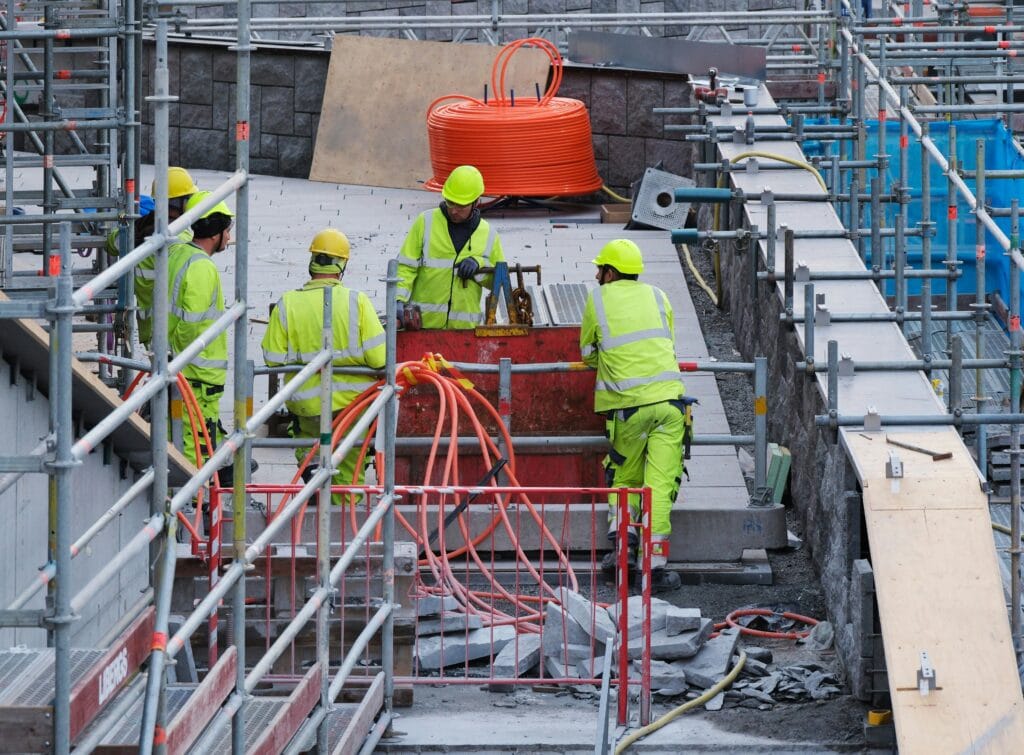
High-visibility (Hi-Vis) clothing is a type of Personal Protective Equipment (PPE) designed to make the wearer easily visible, especially in low-light or high-traffic environments. Typically worn by workers in construction, roadwork, transportation, and warehousing, Hi-Vis clothing incorporates bright colors and reflective materials to ensure visibility from a distance, reducing the risk of accidents. Let’s explore the materials, standards, and key features that make high-visibility clothing essential for worker safety.
High-visibility clothing, often in bright colors like neon yellow or orange and featuring reflective strips, provides critical protection for workers in environments where visibility can mean the difference between safety and serious accidents.
What Materials Are Commonly Used in High-Visibility Clothing?
High-visibility clothing is crafted from materials that enhance visibility in both daylight and nighttime conditions.
The most common materials in Hi-Vis clothing include fluorescent fabrics, retroreflective tape, and durable synthetic fibers.
| Material | Purpose | Examples in Use |
|---|---|---|
| Fluorescent Fabrics | Bright colors for daylight visibility | Polyester, nylon, or blended materials |
| Retroreflective Tape | Reflects light from headlights | 3M Scotchlite™, segmented reflective tape |
| Durable Synthetic Fibers | Enhances longevity and wear resistance | Polyester, PVC, and poly-cotton blends |
Key Material Features:
- Fluorescent Fabrics: These are ideal for daylight and low-light conditions, as they reflect UV light and enhance brightness.
- Retroreflective Tape: This tape bounces light back to its source, making workers more visible to drivers in dark or low-light settings.
- Durable Fibers: Hi-Vis clothing often endures harsh conditions, so it’s made with strong, weather-resistant materials for durability.
What Are the Requirements for High-Visibility Clothing?
Hi-Vis clothing must meet specific safety requirements to ensure it provides adequate visibility and durability in various work environments.
Requirements for high-visibility clothing typically include brightness, reflectivity, durability, and coverage to ensure maximum visibility.
| Requirement | Description |
|---|---|
| Brightness | Must use fluorescent colors like yellow, orange, or green |
| Reflectivity | Must include retroreflective materials for visibility in the dark |
| Durability | Resistant to wear and weather for long-lasting protection |
| Coverage | Should cover significant areas of the body (e.g., torso, arms, legs) for maximum visibility |
Why These Requirements Matter:
Meeting these requirements ensures that Hi-Vis clothing protects workers effectively by making them visible from all angles, regardless of the time of day or lighting conditions.
What is the ISO Standard for High-Visibility Clothing?
ISO (International Organization for Standardization) provides guidelines for the minimum standards high-visibility clothing must meet to ensure worker safety.
The ISO standard for high-visibility clothing is ISO 20471, which outlines requirements for material reflectivity, design, and placement of reflective strips.
ISO 20471 Key Points:
- Three Performance Classes: Class 1 (lowest visibility) to Class 3 (highest visibility) based on the amount of fluorescent and reflective material.
- Material Specifications: Specifies minimum surface areas for fluorescent and retroreflective materials.
- Design Requirements: Reflective strips must be strategically placed for 360-degree visibility around the torso, arms, and legs.
Compliance with ISO 20471 is essential for ensuring Hi-Vis clothing is suitable for high-risk environments, particularly where workers are close to moving vehicles or machinery.
Which Industries Rely Most Heavily on High-Visibility Clothing?
Hi-Vis clothing is indispensable in industries where workers are exposed to moving vehicles, heavy machinery, or low-visibility environments.
Industries that rely most heavily on high-visibility clothing include construction, road maintenance, transportation, and warehousing.
| Industry | Common Hi-Vis Gear | Purpose |
|---|---|---|
| Construction | Hi-Vis vests, jackets, pants | Enhances visibility around machinery |
| Road Maintenance | Hi-Vis jackets, coveralls | Increases visibility for oncoming vehicles |
| Transportation & Logistics | Hi-Vis vests, shirts, hats | Allows forklift operators to spot workers |
| Emergency Services | Hi-Vis jackets, pants, gloves | Ensures visibility in emergency scenes |
| Warehousing | Hi-Vis vests, shirts | Reduces collision risks with equipment |
These industries frequently operate under low light or involve interactions with vehicles, so Hi-Vis clothing is a crucial element of worker safety protocols.
How is the Effectiveness of Hi-Vis Clothing Measured?
The effectiveness of Hi-Vis clothing is measured through visibility tests, durability, and adherence to safety standards like ISO 20471.
Effectiveness is assessed by evaluating brightness, reflectivity, and the coverage area of the high-visibility materials.
Measuring Effectiveness:
- Luminance Testing: Measures the brightness of fluorescent materials in various lighting conditions.
- Reflective Testing: Ensures retroreflective tape meets visibility requirements under headlights or other light sources.
- Durability Testing: Evaluates the material’s resistance to wear, washing, and weather to ensure long-term visibility.
Through these testing methods, Hi-Vis clothing can be certified to ensure it meets industry standards for effective visibility and worker protection.
When Should You Wear Hi-Vis Clothing?
Hi-Vis clothing should be worn whenever workers are exposed to traffic, low light, or environments with heavy machinery or equipment.
Hi-Vis clothing is essential in conditions like low-light hours, poor weather, and in proximity to vehicles or machinery.
- Low-Light Conditions: During early morning, dusk, or night, visibility is compromised, so Hi-Vis clothing enhances safety.
- Weather Hazards: Rain, fog, or snow reduce visibility, making reflective clothing crucial.
- Heavy Traffic Areas: Working near or on roads necessitates Hi-Vis clothing to ensure drivers see workers from a distance.
By understanding when to wear Hi-Vis clothing, workers and employers can ensure maximum safety in risky environments.
What Colors are Considered High Visibility?
Hi-Vis clothing uses specific colors that are easily noticeable in most environments and lighting conditions.
The primary high-visibility colors are fluorescent yellow-green, orange, and red.
Color Choices:
- Yellow-Green: Highly visible in daylight and low light; common in construction and road maintenance.
- Orange: Provides contrast in work areas and is often used in heavy traffic zones or near-road worksites.
- Red: Less common but used in certain environments where it contrasts better with the background.
Each color is selected based on visibility in different conditions, with yellow-green generally considered the most visible.
What to Look for in Hi-Vis Jackets
When selecting Hi-Vis jackets, it’s essential to consider features that provide both visibility and functionality.
Key features to look for in Hi-Vis jackets include weather resistance, quality reflective tape, and adequate insulation for cold environments.
Important Hi-Vis Jacket Features:
- Reflective Tape: Should be durable, highly reflective, and strategically placed for maximum visibility.
- Waterproofing: Essential for working outdoors in rain or snow, ensuring the jacket remains effective.
- Insulation: For colder environments, a well-insulated jacket keeps workers warm while remaining visible.
- Pockets and Storage: Useful for carrying tools and equipment without compromising safety.
Hi-Vis jackets that combine comfort, durability, and visibility make them more practical and effective for high-risk work environments.
What to Look for in Hi-Vis Shirts
Hi-Vis shirts are ideal for indoor or warm-weather work, providing visibility without adding extra layers.
Key considerations for Hi-Vis shirts include breathability, lightweight materials, and certified reflective striping.
Important Hi-Vis Shirt Features:
- Breathable Fabric: Lightweight, moisture-wicking materials keep workers cool in hot environments.
- Comfortable Fit: Shirts should allow for a full range of motion without being too tight or loose.
- Reflective Strips: Must meet visibility standards for both indoor and outdoor environments.
Hi-Vis shirts that are comfortable, breathable, and meet visibility standards enhance compliance and reduce risks, especially in hot or confined work environments.
Conclusion
High-visibility clothing is a critical component of worker safety, ensuring individuals are seen in low-light, high-traffic, or hazardous environments. With a range of materials like fluorescent fabrics and retroreflective tape, Hi-Vis clothing meets strict standards to offer protection across various industries. From jackets to shirts, Hi-Vis clothing is essential for construction workers, road crews, warehouse employees, and emergency responders, reducing risks and enhancing workplace safety.
By choosing high-quality Hi-Vis clothing that meets ISO standards and is suited to the specific needs of the job, workers can stay safe, visible, and compliant with safety protocols in any environment.
Zion Zhang
Recent Posts
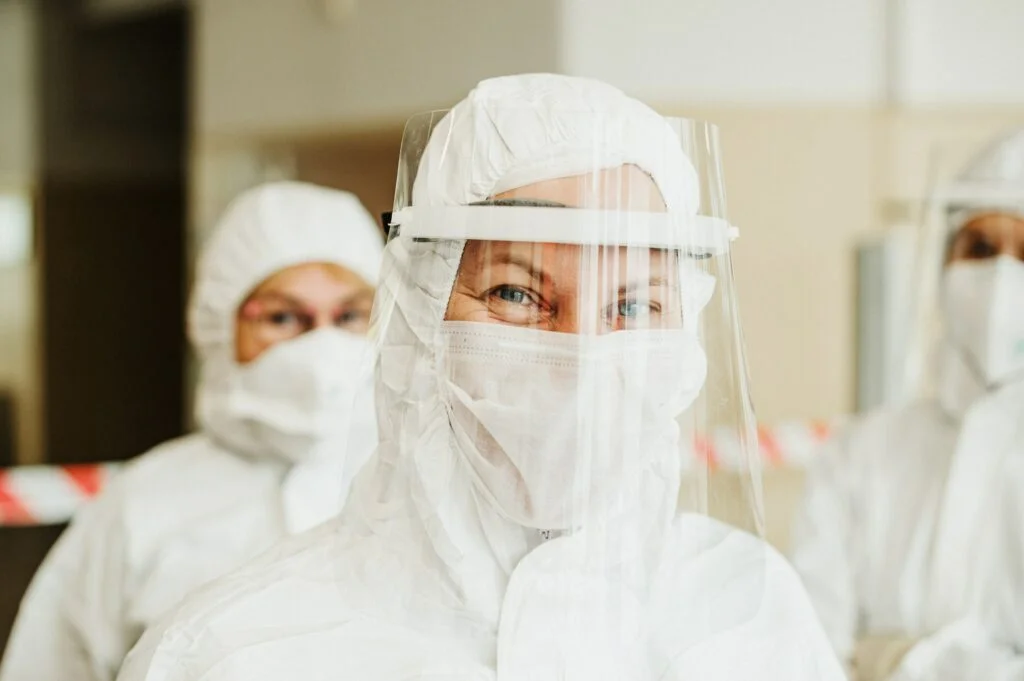 Why is PPE important in Healthcare2025年6月19日Personal Protective Equipment (PPE) is one of the most […]
Why is PPE important in Healthcare2025年6月19日Personal Protective Equipment (PPE) is one of the most […] 10 personal protective equipment and their uses2025年6月19日Personal Protective Equipment (PPE) is a critical part of […]
10 personal protective equipment and their uses2025年6月19日Personal Protective Equipment (PPE) is a critical part of […]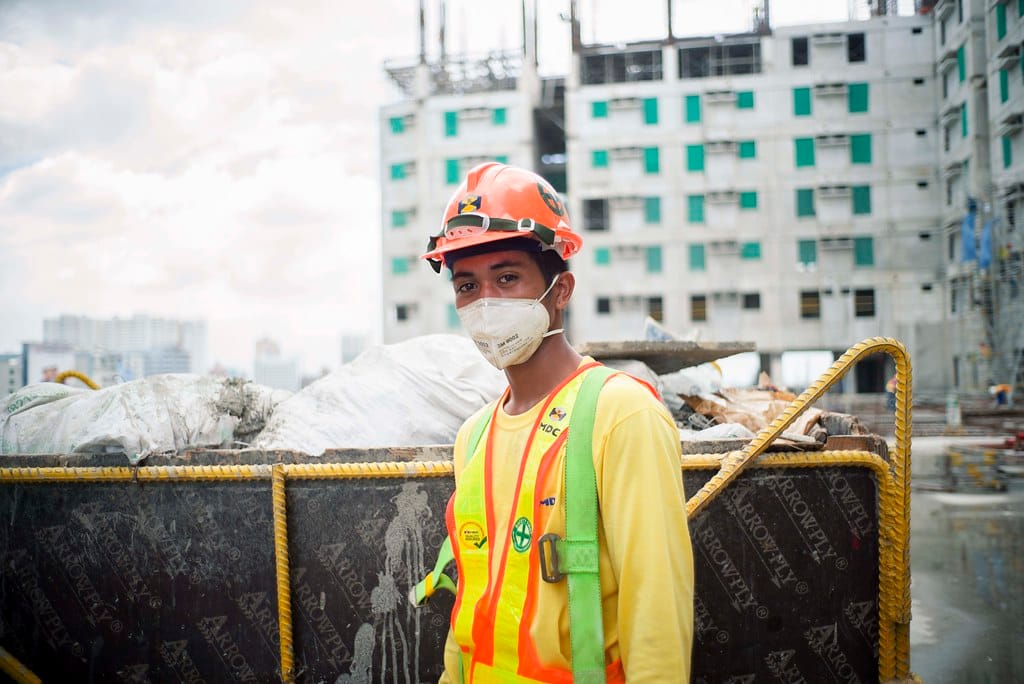 5 Essential Personal Protective Equipment (PPE) Items and Their Uses2025年6月17日When buyers ask me, “Zion, if I can only start with five […]
5 Essential Personal Protective Equipment (PPE) Items and Their Uses2025年6月17日When buyers ask me, “Zion, if I can only start with five […]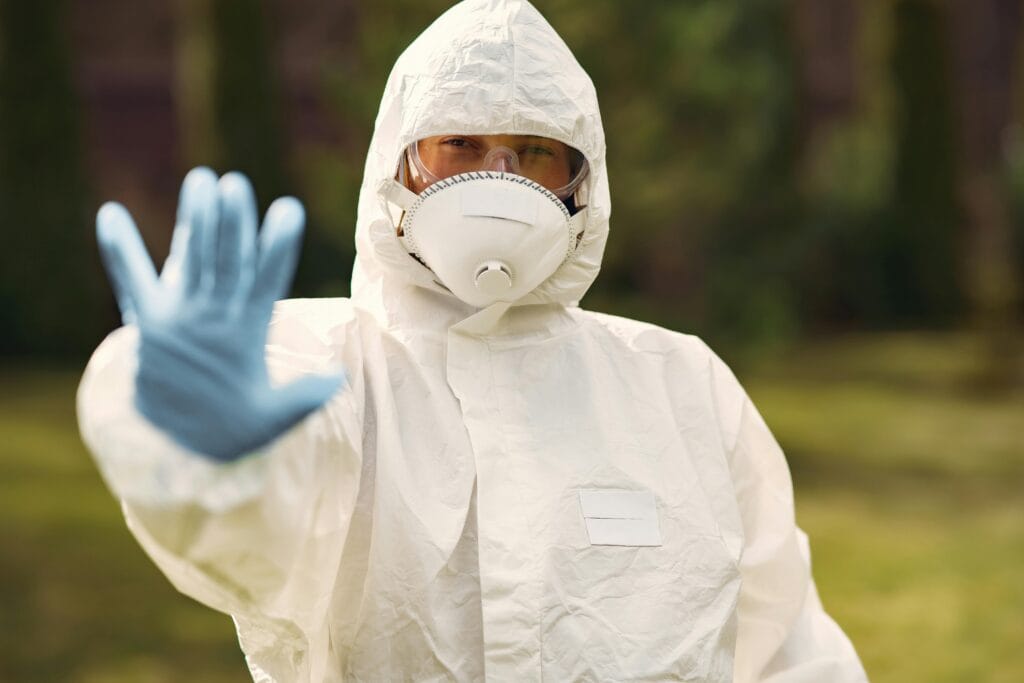 Comprehensive Personal Protective Equipment (PPE) List for Workplace Safety2025年6月17日As a PPE supplier, I’ve talked to dozens of procurement […]
Comprehensive Personal Protective Equipment (PPE) List for Workplace Safety2025年6月17日As a PPE supplier, I’ve talked to dozens of procurement […]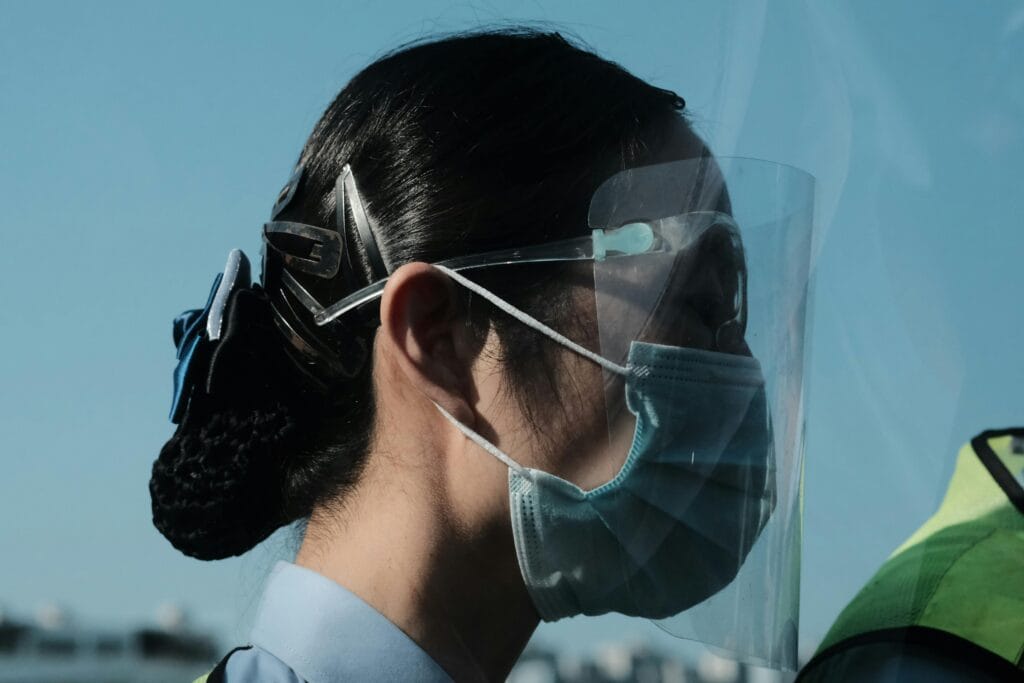 Face Shield Policy: Guidelines for Safe and Effective Use in the Workplace2025年6月17日A buyer once told me, “Zion, we’ve got face shields in the […]
Face Shield Policy: Guidelines for Safe and Effective Use in the Workplace2025年6月17日A buyer once told me, “Zion, we’ve got face shields in the […]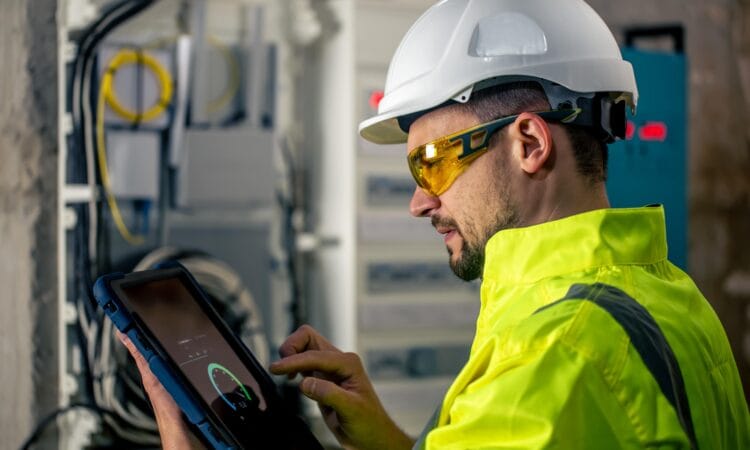 Understanding the Importance of Limb and Body Protection in Hazardous Environments2025年6月16日Not long ago, a buyer from a food processing plant reached […]
Understanding the Importance of Limb and Body Protection in Hazardous Environments2025年6月16日Not long ago, a buyer from a food processing plant reached […]
CONTACT US
- Feel free to contact us any time. We will get back to you as soon as we can!
- +86-17330061805
